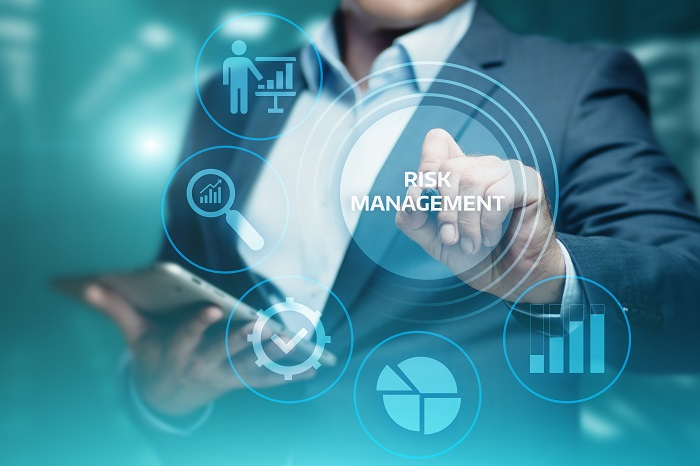
 Data Structure
Data Structure Networking
Networking RDBMS
RDBMS Operating System
Operating System Java
Java MS Excel
MS Excel iOS
iOS HTML
HTML CSS
CSS Android
Android Python
Python C Programming
C Programming C++
C++ C#
C# MongoDB
MongoDB MySQL
MySQL Javascript
Javascript PHP
PHP
- Selected Reading
- UPSC IAS Exams Notes
- Developer's Best Practices
- Questions and Answers
- Effective Resume Writing
- HR Interview Questions
- Computer Glossary
- Who is Who
Managing Risks in Project Management
Risk management is an essential part of project management, as it helps to identify and address potential risks and issues that may arise during a project. Risk management procedures for large-scale projects may require considerable detailed preparation for each risk to guarantee that prevention and control plans are in place if project concerns develop. Risk management for smaller projects may be a straightforward, prioritized list of high, medium, and low-priority hazards.
In this article, we will learn about risk management in detail and common strategies for managing risks in project management.

What is Risk Management?
Risk management is the process of identifying, analyzing, and responding to risks in a project. It involves identifying potential problems that may arise during the project and developing strategies to minimize or mitigate those risks. Risk management aims to ensure that the project is completed on time, within budget, and to the required quality standards.
A risk could affect your project's timing, performance, or cost. In a project management setting, risks are potentialities that, if they materialize, are categorized as "problems" that call for a risk response strategy. Therefore, risk management is figuring out, classifying, prioritizing, and preparing for risks before they become problems.
Key Steps in the Risk Management Process
The risk management procedure includes the following crucial steps ?
Identify Risks ? This involves identifying potential risks that could impact the project, such as delays, cost overruns, or quality issues.
Analyze Risks ? Once they have been identified, they should be analyzed to determine their likelihood and impact on the project.
Prioritize Risks ? Risks should be prioritized based on their likelihood and impact. This helps the project team focus on the most important risks first.
Develop Risk Responses ? Once the risks have been prioritized, the project team can develop strategies to minimize or mitigate the risks. These strategies may include contingency plans, risk-sharing agreements, or additional resources to address the risks.
Monitor and Control Risks ? The project team should continually monitor and track risks throughout the project to ensure they are effectively managed. If a risk does occur, the project team should implement th appropriate response to minimize its impact.
Important Strategies for Managing Risks in Project Management
Here are some key strategies for managing risks in project management ?
Identify Potential Risks
The first step in risk management is identifying potential risks that may arise during a project. This can be done through various methods, such as brainstorming sessions, risk assessments, and stakeholder interviews. It's important to consider both external and internal risks, as well as those specific to your project and those more general in nature.
Assess the Likelihood and Impact of Risks
Once potential risks have been identified, assessing their likelihood and potential impact on the project is important. This can help prioritize risks and determine which ones must be addressed first.
Develop Risk Management Plans
After potential risks have been identified and assessed, it's time to develop a management plan. This may include developing contingency plans for unexpected events, implementing risk-reduction strategies, and allocating resources for risk management.
Monitor and Review Risks
Risk management is not a one-time activity but rather an ongoing process. It's important to monitor and review risks to ensure that they are effectively managed and to identify any new risks that may arise.
Communicate Risks to Stakeholders
It's important to keep stakeholders informed about potential risks and how they are managed. This can help build trust and ensure everyone is working towards the same goals.
Common Tools for Managing Risks
In addition to these general strategies, several tools and techniques can be used to help manage risks in project management. Among the most popular tools and techniques are ?
Risk Register ? A risk register is a document that tracks and records all identified risks, including their likelihood and potential impact. It's a useful tool for tracking and monitoring risks throughout a project.
Risk Matrix ? A risk matrix is a graphical representation of risks that shows their likelihood and potential impact on a grid. It's a useful tool for visualizing and prioritizing risks.
Risk Assessment ? A risk assessment is a structured process for identifying and evaluating risks. It typically involves identifying potential risks, assessing their likelihood and potential impact, and developing strategies for managing them.
Contingency Planning ? Contingency planning involves developing plans for dealing with unexpected events or circumstances. This may include identifying alternative courses of action, allocating resources for risk management, and developing backup plans.
Change Management ? Change management is the process of planning, implementing, and monitoring changes to a project. It's a useful tool for managing risks that may arise due to changes to the project scope, timeline, or other factors.
Using these tools and techniques, project managers can effectively identify, assess, and manage risks to help ensure the success of their projects.
Best Practises for Ensuring Effective Risk Management
Risk management is an essential part of project management and is crucial for the success of individual projects and organizations. Several best practices can help to ensure effective risk management in project management. These include ?
Involving Stakeholders ? It's important to involve stakeholders in risk management, as they can provide valuable insights and perspectives on potential risks.
Establishing clear roles and Responsibilities ? It's important to establish clear roles and responsibilities for managing risks, including who is responsible for identifying, assessing, and managing risks.
Utilizing Automation Tools ? Automation tools, such as project management software, can help to streamline the risk management process and provide real-time visibility into potential risks.
Training and Support ? It's important to provide training and support to team members to help them understand the importance of risk management and how to identify and manage risks effectively.
Conclusion
In conclusion, risk management is an essential part of project management. By proactively identifying, assessing, and managing risks, project managers can help ensure that projects are completed on time, within budget, and to the highest quality standards.
Using tools and techniques such as a risk register, risk matrix, risk assessment, contingency planning, and change management, project managers can effectively manage risks and help mitigate or eliminate potential issues.

